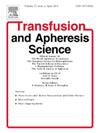输血医学教育-什么是首选?
IF 1.2
4区 医学
Q4 HEMATOLOGY
引用次数: 0
摘要
输血医学是最年轻的医学分支之一。该专业始于1900年左右,当时兰德斯坦纳和他的研究小组发现了红细胞的特征(血型)。虽然它为更安全的临床输血打开了大门,但该领域在很大程度上探索了与血液和血液制品的制造和保存以及人类源材料提供者献血者有关的技术实验室方面。因此,教育主要涵盖了这些技术要素,侧重于实验室技能,以试管为导向。这就提出了一个问题:知识和常规技能哪个更重要?围绕输血(输血医学)的技术实验室方面设计了各种各样的教育或学习课程,很少关注重要的知识方面,更深入的理论背景和技术制造方面的治理结构。许多教育或学习没有系统地和全国组织起来,往往由非专业教师在当地提供。世界卫生组织(世卫组织)和联合国开发计划署(开发计划署)收集的数据以及专业协会进行的调查提供了一幅令人沮丧的画面,需要各国政府,特别是低收入和中等收入国家的政府采取重点行动。这篇综述说明了知识共享作为教育驱动力的重要性和经济性:意识和理解、教育环境和教育部指导下的学习氛围——政策和战略、教育系统的法律体系和法规都需要尊重对教育成果的承认和对所需知识的实施。本文章由计算机程序翻译,如有差异,请以英文原文为准。
Education in transfusion medicine – What is preferred?
Transfusion Medicine is one of the youngest medical branches. The specialty started around 1900 with the discovery of red cell characteristics (blood groups) by Landsteiner and his research group. Although it opened the door to more safe clinical transfusion, the field largely explored the technical laboratory aspects related to the manufacturing and preservation of blood and blood products and the provider of the human source material, the blood donor. As a consequence, education largely covered these technical elements focusing on laboratory skills, test tube oriented. That raises the question: is it knowledge or the regular skills which are regarded as the most important? There is a great variety of educational or learning curricula designed around the technical laboratory aspects of blood transfusion (Transfusion Medicine), with little attention to the important aspects of knowledge, the deeper theoretical background and governance structure of the technical manufacturing aspects. Much education or learning is not systematically and nationally organized and often locally provided by non-professional teachers. The data assembled by the World Health Organization (WHO) and United Nations Development Program (UNDP), but also through surveys conducted by professional associations provide a sad picture that needs focused action by governments particularly in the Low-and Middle-Income Countries (LMICs). This review illustrates the importance and economy of sharing of knowledge as the driving force in education: Awareness and understanding, an education environment and a learning climate under the guidance of the Ministry of Education – policy and strategies, the legal system and regulation of the education system are required to respect recognition of education outcomes and implementation of required knowledge.
求助全文
通过发布文献求助,成功后即可免费获取论文全文。
去求助
来源期刊
CiteScore
3.60
自引率
5.30%
发文量
181
审稿时长
42 days
期刊介绍:
Transfusion and Apheresis Science brings comprehensive and up-to-date information to physicians and health care professionals involved in the rapidly changing fields of transfusion medicine, hemostasis and apheresis. The journal presents original articles relating to scientific and clinical studies in the areas of immunohematology, transfusion practice, bleeding and thrombotic disorders and both therapeutic and donor apheresis including hematopoietic stem cells. Topics covered include the collection and processing of blood, compatibility testing and guidelines for the use of blood products, as well as screening for and transmission of blood-borne diseases. All areas of apheresis - therapeutic and collection - are also addressed. We would like to specifically encourage allied health professionals in this area to submit manuscripts that relate to improved patient and donor care, technical aspects and educational issues.
Transfusion and Apheresis Science features a "Theme" section which includes, in each issue, a group of papers designed to review a specific topic of current importance in transfusion and hemostasis for the discussion of topical issues specific to apheresis and focuses on the operators'' viewpoint. Another section is "What''s Happening" which provides informal reporting of activities in the field. In addition, brief case reports and Letters to the Editor, as well as reviews of meetings and events of general interest, and a listing of recent patents make the journal a complete source of information for practitioners of transfusion, hemostasis and apheresis science. Immediate dissemination of important information is ensured by the commitment of Transfusion and Apheresis Science to rapid publication of both symposia and submitted papers.

 求助内容:
求助内容: 应助结果提醒方式:
应助结果提醒方式:


